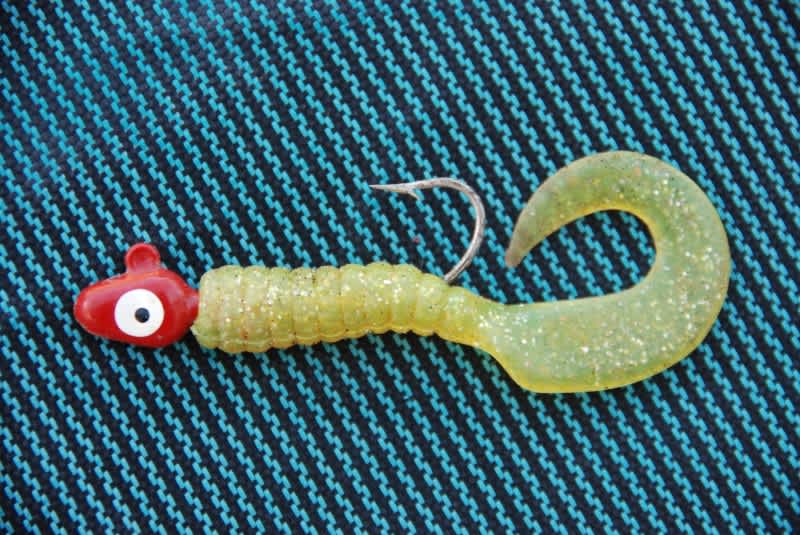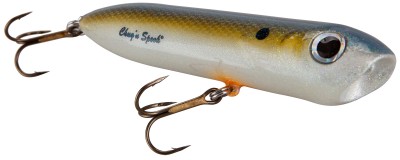It’s All in the Retrieve
Dan Armitage 10.22.13

Many beginning anglers using artificial lures for the first time think that all they have to do is cast them out as far as they can and reel them back in at a steady pace to catch fish. Often the only change they will make to the retrieve is the speed at which they crank the reel’s handle.
That’s rarely the best retrieve for any type of lure, with the exception of artificial spoons and crankbaits at certain times. Here are some tips for retrieving some of the more popular types of artificial lures.
Jigs
These are the simplest and perhaps the most adaptable of all artificial lures. Consisting of little more than a hook weighted at the head with lead or metal and given color and shape by attaching feathers, hair, or a soft plastic tail to the hook’s shank, jigs come in sizes ranging from 1/100 of an ounce to several ounces in weight. They can—and do—catch any gamefish that swims. Other than their fur, feather, or plastic dressing, however, jigs do not come with any built-in action, so any special movement offered by a jig must be imparted by the angler.
The most popular retrieve for jigs is to cast out and allow the lure to sink to the bottom. At that point, a short hopping action can be given to the bait by lifting the rod tip up and then dropping it back down while retrieving the short amount of slack line created by the lift up and forward. You can repeat this highly-effective hopping retrieve all the way back to the boat, changing the speed or the length of the lift until you find the right action by connecting with a fish. The faster the tip is raised, the more “snap” that is given to the jig. You can also crawl a jig along the bottom with a slow and steady retrieve, but doing so may cause the lure to snag on rocks, weeds, and other bottom debris.
Because their action must be constantly offered to the lures by the angler, jigs are usually not good candidates for trolling. On the other hand, jigs are one of the few artificial lures that can be used with live bait. Putting a piece of worm nightcrawler, or impaling a minnow through both lips on the jig’s hook, can make it an extremely effective bait.
Crankbaits
These are long and slender lures that resemble real baitfish and are very effective and adaptable. Most crankbaits float and have a metal or plastic “lip” angling out from under the front part of the lure that uses water pressure to pull it down beneath the water’s surface when the bait is retrieved. Most of the time these lips are cupped, much like the shape of a spoon, to cause the lure to wobble back and forth while it dives. That’s why they’re called “crankbaits”—you have to crank the reel handle to make them dive and work.
Like spoons, crankbaits can be effective when retrieved at a steady pace, and usually the faster you reel them in, the deeper they will dive. But also like spoons and most other lures, crankbaits can be made even more attractive to fish when they are stopped, twitched, or their pace sped up or slowed down by the angler during the retrieve. The same pace-changes that can be used with spoons can be made while crankbaits are being trolled behind your deck or pontoon boat to increase their effectiveness.

Topwaters
These lures are made of wood or plastic to float and are intended to stay on the surface, where they imitate an injured baitfish, frog, insect or other creature that make an easy meal for gamefish lurking in the water below. Topwater baits are most effective in shallow water less than 10 feet deep, and near shore or among weedbeds. The surface lures should be cast out and retrieved slowly, stopped frequently to remain in place for varying intervals. Twitching to cause the lures to splash imitates the struggles of a baitfish and helps attract gamefish to the lure by sight and sound.
Because they are most effective in shallow, weedy, near-shore waters, surface baits are not often used for trolling. Because the gamefish burst onto the surface when striking surface lures, however, many anglers find that casting topwater baits to be the most exciting way to catch fish.
Spoons
The curved shape of spoons cause them to wobble back and forth, and those made of metal can be shined and polished to catch the sun in flashy fashion that appears to look just like a real, silver-sided baitfish. Spoons may also be painted in a myriad of colors to match local baitfish, and because they are made of metal, the lures are heavy enough to be cast long distances, where they sink quickly to about any depth desired.
The automatic wobbling action offered by spoons make them prime candidates for steady—if slow—retrieves, or trolling. If you reel in or troll a spoon too fast, instead of wobbling from side to side as it is meant to do, it will spin, which reduces its effectiveness while causing a bad case of line twist.
Even spoons, however, may benefit from a twitch, stop, or change in speed at times to trigger a strike from following fish. To add extra action while trolling, you can simply put your engine into neutral from time to time or steer a zig-zag course to make the lure speed up, slow down, and change directions.

